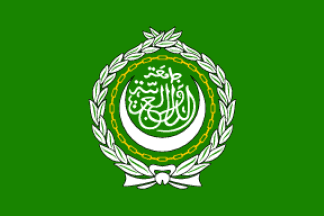Arab League Agrees to Formation of Regional Army as Yemen Assault Expands

Egyptian military dictator Abdel Fattah al-Sisi announced at a meeting of the Arab League on Sunday that the organization had agreed in principle to the formation of a regional military force. A grouping of 22 countries in the Middle East and Africa, the Arab League has long sought to develop a military force which could actively intervene throughout the region.
Egyptian officials indicated that the army will be composed of 40,000 elite soldiers backed by jet fighters, naval warships and light armor. The announcement was made at the Arab League’s annual meeting, held in the Egyptian resort town of Sharm El Sheikh.
The secretary-general of the Arab League, Nabil Elaraby, read a communiqué stating that the new military force would be aimed at combating militant Islamist forces, including the Islamic State of Iraq and Syria, which now have a presence in Yemen and have taken control over significant portions of Iraq, Syria and Libya. The army could also be deployed at the request of any Arab nation that declared it was facing a threat to its national security.
The new army will primarily serve as a proxy force for the United States to assert its geopolitical interests across the wider Middle East and Africa. The US provides a significant amount of military equipment, weaponry and logistical support to the countries that belong to the Arab League.
The government of US President Barack Obama signed $90 billion in weapons deals with the Saudi monarchy between 2010 and 2014, agreeing to provide Saudi Arabia with 84 new jet fighters, 160 new helicopters and heavy artillery, armored vehicles and anti-tank missiles. The US has provided the Egyptian government with at least $1.3 billion annually in military equipment and assistance for more than 30 years.
The agreement came amidst the expanding Saudi-led, US-supported air campaign against Zaydi Shiite Houthi rebels in Yemen, now in its fifth day. In addition to the deployment of US-supplied jet fighters and bombs by Saudi Arabia and its allies, the American military has been providing vital intelligence and logistical support for carrying out air strikes.
With the open military intervention of Saudi Arabia and other Sunni-majority countries in support of President Abd Rabbuh Mansour Hadi against the Iranian-backed Houthis, the ongoing sectarian conflict in Yemen threatens to explode into a region-wide war with potentially devastating consequences.
Arab League Secretary-General Elaraby told reporters over the weekend that Saudi Arabia and its allies had no choice but to launch a military assault after the Houthis moved against President Hadi’s stronghold in Aden, Yemen’s second-largest city, last week.
“Yemen was on the brink of the abyss, requiring effective Arab and international moves after all means of reaching a peaceful resolution have been exhausted to end the Houthi coup and restore legitimacy,”
he stated.
Air strikes were reported Saturday on the Attan air base in Sanaa, air defense systems in the western Red Sea province of Hodeida, and against targets in the northern Houthi stronghold of Saada. The Yemeni Health Ministry reported that air strikes in Sanaa between Saturday and Sunday had killed 35 people and wounded 88.
Air strikes have been launched against the Houthi-controlled Al Anad airbase, which had served as the headquarters for US drone missile strikes against suspected Al Qaeda militants in Yemen. US and European Special Operations soldiers evacuated the air base last week in the face of the Houthis’ southern advance.
There was also continued fighting Sunday between Houthi militia backed by military forces loyal to former longtime ruler Ali Abdullah Saleh and forces backing his successor Hadi in the southern port city of Aden. Since fighting began in Aden last week, at least 61 people have been killed and a further 500 wounded.
Hadi fled Yemen for Saudi Arabia on Wednesday in the face of an assault on Aden by Houthi militia and forces loyal to Saleh. Both Hadi and Saleh enjoy little popular support within Yemen due to their backing of the reviled program of drone assassinations carried out in the country by the Obama administration since 2009.
The campaign of air strikes has been backed by the threat of an imminent ground invasion spearheaded by Saudi and Egyptian troops. Saudi Arabia has mobilized as many as 150,000 troops and stationed heavy artillery along its border with Yemen. Egypt has reportedly stationed troop ships off the coast of Yemen for a possible amphibious assault. Pakistani Prime Minister Nawaz Sharif, in a phone call Sunday with Saudi King Salman bin Abdulaziz Al Saud, offered “all potentials of the Pakistani Army” to assist Saudi Arabia. Sudan has also mobilized soldiers for a possible ground invasion.
Indicating plans for long-term military operations in Yemen, the Arab League released a statement declaring that the bombing campaign would continue until the Houthis completely “withdraw and surrender their weapons.”
Brigadier General Ahmed Asseri, a spokesman for the Saudi-led coalition, told reporters on Sunday that the assault on the Houthis would continue until Hadi could reassert control over the country. “The Yemeni army was almost dismantled,” Asseri stated.
“One of the conditions is for them to take over. We will continue to attack the militias, we will keep them under pressure, until the conditions become very favorable for the army to take over.”
Referring to the goal of forcibly re-imposing Hadi and defeating the Houthis, Saudi King Salman vowed in a speech to this weekend’s Arab League meeting that his country will continue military operations “until stability is returned” to Yemen.

